NIL
From “neglect” to “real commitment”
Was Indiana football always a sleeping giant, simply short on the necessary investment to the elevate the program, and often lacking a competent head coach? Probably. That’s what Curt Cignetti thinks, anyway. And he certainly has a more than adequate frame of reference to make that determination. “You’ve got to be good in football nowadays, […]



Was Indiana football always a sleeping giant, simply short on the necessary investment to the elevate the program, and often lacking a competent head coach?
Probably. That’s what Curt Cignetti thinks, anyway. And he certainly has a more than adequate frame of reference to make that determination.
“You’ve got to be good in football nowadays, because that’s where the money is. And maybe Indiana was a little late to the game in realizing that. I think getting a president in Pam Whitten who loves football and is from Alabama really helped,” Cignetti told ESPN’s Greg McElroy earlier this month.
He believes IU has always had the potential to achieve the new heights the football program experienced in 2024.
“What happened here in the past is only because of neglect. We’ve got a great campus, great university, great resources, second-largest alumni base in America.”
Neglect is a harsh word delivered by a man who isn’t known as one to sugarcoat his thoughts.
But on his way out the door, Cignetti’s predecessor Tom Allen signaled the same kind of concerns.
IU made some moves over the 15 prior years that signaled some degree of recognition the investment in football had to increase. Both ends of Memorial Stadium were enclosed, a locker room project was completed, and other amenities were added.
But during Allen’s tenure, Indiana was confronting the new realities of college football in the NIL era.
And in Allen’s mind, IU’s efforts were inadequate.
“College football has changed dramatically over the past several years. Some of those changes have been a shock to the conscience of those who support IU football. The time has come to fully embrace those changes and I pray that IU does just that,” Allen said in November 2023.
As he set out to replace Allen, IU AD Scott Dolson knew he had to demonstrate to prospective candidates Indiana was ready, willing and able to test the limits of successful football at Indiana.
IU was at a major inflection point in 2023, with the Big Ten expanding to 18 teams and a massive new media rights deal about to help replenish the coffers. The opportunity was there for university leadership intent on building a competitive football team.
It started with securing significant investments from donors in Indiana’s forgotten revenue sport.
“Coach Cignetti would not be here if we didn’t have a robust NIL program,” Dolson told WRTV last year. “That’s just because you have to have the resources to be able to win. As good as he is, he needs those resources as well. The NIL opportunity for us has enabled us to really level the playing field around the country.”
Ironically, one of Indiana’s biggest initial investments in the program was the $15.5 million it paid Tom Allen to buy out his contract in 2023. In addition to that and the NIL commitment, IU leadership has substantially increased the salary pool for assistant coaches, and then gave major raises to Cignetti and his entire staff. IU’s spending on football coaching salaries alone has more than doubled over the last six years.
But the investment goes much deeper, into things like recruiting budgets, player perks and benefits, the gameday experience, support staff, and more.
According to information published in the Knight-Newhouse database, IU has increased its football expenditures every year since 2021, from $23.9 million to $61.6 million. 2024 was the first year at least going back to 2005 that IU exceeded the Big Ten median in total football spending.
Cignetti believes he’s getting what he needs to not rev the IU football engines like he did in 2024, but keep the Hoosiers in the national conversation going forward.
“I felt a real commitment from the President Pam Whitten and the Athletic Director Scott Dolson to get football going,” he said. “I mean football generates 90% of the athletic revenue across the country, and they wanted to get it rolling. I think you can win anywhere in America with the proper commitment from the top.”
For complete coverage of IU football, GO HERE.
The Daily Hoosier –“Where Indiana fans assemble when they’re not at Assembly”
Related
NIL
USC Trojans Lose To Oregon State In Corvallis Regional Final, Now Face Elimination
The USC Trojans lost to the Oregon State Beavers on Sunday night 14-1. USC had a chance to clinch a spot in the 2025 NCAA Tournament Super Regionals but were no match for the Beavers. The Trojans will have another chance on Monday. USC was one of the last teams to make the NCAA tournament […]

The USC Trojans lost to the Oregon State Beavers on Sunday night 14-1. USC had a chance to clinch a spot in the 2025 NCAA Tournament Super Regionals but were no match for the Beavers. The Trojans will have another chance on Monday. USC was one of the last teams to make the NCAA tournament field and now they are just one win away from advancing.
The Oregon State Beavers on the other hand are the No. 8 overall seed in the entire NCAA tournament field and are the hosts of this Corvallis Regional. Oregon State lost their opening game against Saint Mary’s on Friday, but proceeded to win their next two against TCU on Saturday and then their rematch against St. Mary’s Sunday afternoon before dominating USC in the night cap.
Bottom 9th: Oregon State 14, USC 1
Schwartzberg pops out to shortstop.
Riske hit into fielders choice.
Hedges struck out.
Higgins singled to center.
Top 9th: Oregon State 14, USC 1
Macias grounds out.
Reeder struck out swinging.
Singer reaches on infield single. Arquette scored.
Caraway walked. Arqeutte to third. Turey to second
Weber flies out to right.
Turley walked. Arqeutte to second.
Arquette singles to center.
Bottom 8th: Oregon State 13, USC 1
Elliot strikes out.
Martinez struck out looking.
Basseer struck out swinging.
Top 8th: Oregon State 13, USC 1
Tait struck out swinging.
Peterson doubles. Singer scored.
Macias flied out.
Reeder flied out.
Singer doubled. Caraway scored.
Caraway walked.
Bottom 7th: Oregon State 11, USC 1
Lopez strikes out.
Covarrubias beats out infield single. Hedges to second.
Lopez strikes out swinging.
Higgins struck out swinging.
Hedges singles to right.
Top 7th: Oregon State 11, USC 1
Weber hit into double play.
Turley singles to center. Peterson scored. Arquette to second.
Arquette reaches first on fielders choice. Talt out at second. Macias scores. Peterson to third.
Talt walked. Macias to third. Peterson to second.
Peterson reaches first on a bunt single. Macias to second.
Macias walks.
Bottom 6th: Oregon State 9, USC 1
Higgins strikes out.
Tejeda grounds out to first. Lopez to third. Basseer to second.
Martinez strikes out looking.
Basseer singles to left.
Lopez walks.
Top 6th: Oregon State 9, USC 1
Reeder flies out to right.
Singer lines out.
Caraway homered to left. Arquette and Turley scored.
Weber struck out swinging.
Turley walks.
Arquette advances to second.
Arquette singles to left field.
Bottom 5th: Oregon State 6, USC 1
Covarrubias strikes out swinging.
Lopez strikes out looking.
Martin-Grudzielanek strikes out.
Hedges walks. Tejeda to third. Higgins to second.
Higgins singles to right. Tejeda to second.
Tejeda singles to left.
Top 5th: Oregon State 6, USC 1
Talt grounds out to first.
Peterson reaches first on infield single.
Macias struck out swinging.
Reeder strikes out swinging.
Bottom 4th: Oregon State 6, USC 1
Basseer to second on wild pitch. Martinez strikes out looking.
Basseer singles to right.
Lopez flies out.
Covarrubias flies out.
Top 4th: Oregon State 6, USC 1
Singer strikes out looking.
Caraway strikes out looking.
Weber hits into force out. Arquette to third. Turley out at second.
Turley walks.
Arquette advances to second.
Arquette singles to left.
Bottom 3rd: Oregon State 6, USC 1
Lopez grounds out to first.
Hedges strikes out swinging
Martin-Grudzielanek grounds out.
Top 3rd: Oregon State 6, USC 1
Dalt grounds out to second.
Peterson walks.
Macias walks.
Reeder strikes out swinging.
Singer sacrifices to the pitcher, Caraway to third. One out.
Caraway doubles to right center. Weber scores.
Weber doubles to left center.
Turley homers to left.
Bottom 2nd: Oregon State 4, USC 1
Higgins in for Dowd, flies out to left.
Tejada reaches first on infield single. Martinez to thrid on error.
Martinez singles to left. Basseer scores.
Basseer triples to center.
Lopez strikes out swinging.
Covarrubias grounds out to short.
Top 2nd: Oregon State 4, USC 0
Arquette strikes out swinging.
Talt out on squeeze bunt. Macias scores. Peterson to third. Two outs.
Peterson singles to center. Reeders scores. Macias to third. Peterson advances to second.
Macias reaches on bunt after fielders choice comes home. Not in time, Caraway scores. Reeder to second.
Reeder beats out bunt single. Weber scores. Caraway to third with one out.
Singer sacrifice bunt to pitcher. Weber to third. Caraway to second.
Caraway hits infield single. Weber to second.
Weber singles to center.
Bottom 1st: Oregon State 0, USC 0
Lopez pops out to first.
Martin-Grudzienlanek strikes out.
Hedges doubles to right. Dowd out at home.
Dowd singles to right.
Top 1st: Oregon State 0, USC 0
Turley strikes out swinging.
Arquette flies out to right.
Talt grounds out to second.
MORE: USC Trojans Could Face More SEC Teams If Brian Kelly Gets His Way
MORE: What Big Ten Coaches Said About Lincoln Riley, USC Trojans
MORE: USC Trojans Elite 2026 Recruiting Class: Highest Rated Commits
The Trojans won each of their two games so far at the Corvallis Regional against the TCU Horned Frogs on Friday and the Saint Mary’s Gaels on Saturday, advancing to the championship Sunday night.
With this regional being a double elimination and USC not having lost a game yet, the Trojans will have two opportunities to advance. Their first opportunity was Sunday night. Even with the loss, they will be back at it tomorrow in a winner take all against these same Oregon State Beavers.
The USC Trojans have had one of the most successful programs in the history of college baseball. USC has appeared in the College World Series 21 times and won it 12 times. The. However, it has been a long time since the Trojans had this type of success. Their last College World Series appearance came in 2001, with 1998 being their last championship.
The last decade of USC baseball has especially been difficult. By making the NCAA tournament this season, USC snapped a tournament drought that dated back to 2015. Furthermore, USC had a Super Regional appearance dogfight that goes back 20 years to the 2005 season.
This 2025 season, USC has an overall record of 37-21 and a Big Ten conference record of 18-12. They finished fourth in the Big Ten in their first season as a member of the conference.
NIL
The new playbook
The Vestavia Hills High School football program has produced several high-profile players over the years, but one stands out above the rest in terms of the recruiting process he faced. Defensive end Jordan Ross was one of the most highly sought prospects in America before he signed with the University of Tennessee in late 2023. […]
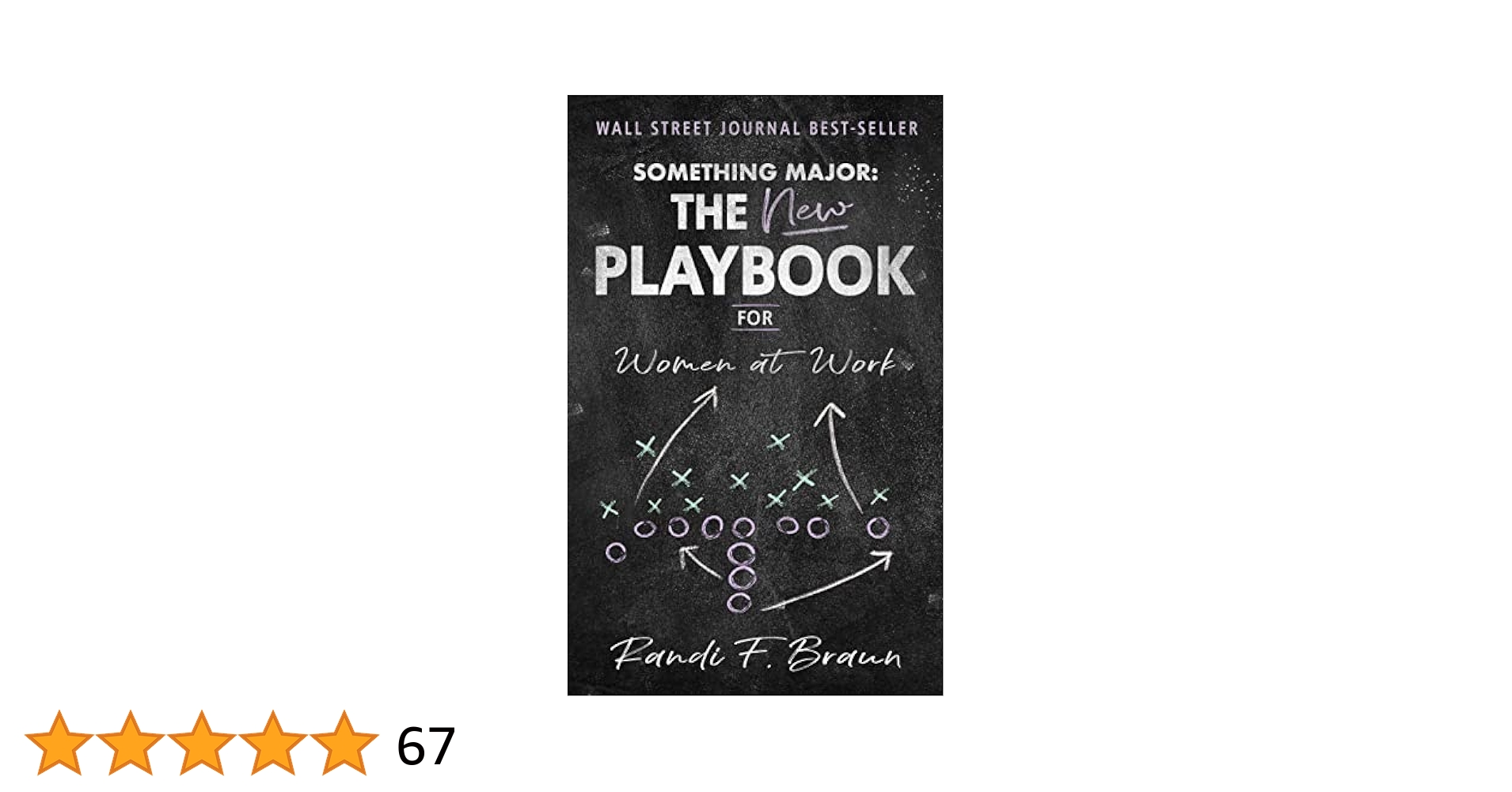


The Vestavia Hills High School football program has produced several high-profile players over the years, but one stands out above the rest in terms of the recruiting process he faced.
Defensive end Jordan Ross was one of the most highly sought prospects in America before he signed with the
University of Tennessee in late 2023. He put together an illustrious career at Vestavia, and with that came plenty of attention.
“His recruitment was eye-opening,” Vestavia Hills football coach Robert Evans said. “He and his family handled the process with much grace.”
While Ross’ recruitment gaining him plenty of attention was nothing abnormal, the type of attention was different than it would have been five or 10 years ago. Top football prospects formerly gained notoriety and hype for National Signing Day decisions. Now, it has more to do with monetary discussions surrounding name, image and likeness.
Elite prospects like Ross aren’t quite as affected by the new landscape of college athletics — one that has seen opportunities for high schoolers diminish over the years. But he is the exception to the new rule.
“We try to have honest discussions about the landscape of recruiting, including how difficult it is for walk-ons to make a roster now,” Evans said. “Players and parents alike both need to have an understanding of how the process has been affected by the portal and NIL, and what the realistic options are …
“From my perspective, recruiting has not changed for the really high-end prospect or the D3 prospect. Everyone in between has been pushed down a level or two. The kid signing with UAB 10 years ago is fortunate to have a D2 offer now.”
Evans knows the territory well. As a two-sport star himself at Vestavia, he received interest from schools like Auburn before landing a scholarship to Samford University, where he was a standout in both football and baseball. Today, his options might be limited.
“There are fewer scholarship spots,” said ESPN recruiting analyst Tom Luginbill. “Schools used to divide
scholarships among high school prospects. Now, they save 12 to 14 for portal players. High school kids have fewer options, and many are being forced into choices they wouldn’t have made otherwise.”
SHIFTING SAND
Coaches are no longer building around potential. They’re buying certainty. Between the rise of the transfer portal, the explosion of name, image and likeness (NIL) dollars and the impending House v. NCAA court settlement — which could allow direct revenue-sharing paychecks from schools to athletes — the entire scholarship model has changed.
For high school seniors, that means fewer opportunities. Unless you’re elite, the message is clear: wait your turn — or get left behind.
In place of the old system is a new billion-dollar industry in which high school prospects are still commodities — just ones with less value than they held before the money started flowing.
Not all college programs play on the same field. The Power Four conferences — the SEC, Big Ten, Big 12 and ACC — have TV deals, booster collectives and NIL opportunities.
Below them are Group of Five schools like UAB, Jacksonville State or Troy — with fewer scholarships, smaller budgets and less exposure. Then come FCS, D2 and junior colleges, where many now land by necessity.
THE PORTAL JAM
For decades, high school football was the bedrock of college recruiting. Talent rose, coaches scouted, scholarships followed and dreams materialized on National Signing Day.
That world is gone.
It started with COVID. In 2020, the NCAA granted all athletes an extra year of eligibility. That decision created a massive traffic jam. Fifth-year seniors stayed. Sixth-year players reclassified. Scholarships that would have gone to high school seniors disappeared.
Then came NIL. In July 2021, athletes could finally earn money off their name, image and likeness. But what was meant to reward marketability became a loosely disguised pay-for-play market.
“Monetary compensation is no longer based on results,” Luginbill said. “It’s not about ‘if I produce, schools will want me.’ Now, it’s ‘how much are you going to pay me to play here?’ There’s no accountability from the player’s side, and that’s not what NIL was intended for — certainly not in recruiting.”
At the same time, the transfer portal exploded. The NCAA removed the sit-out rule for first-time transfers, and a flood of player movement followed. A new reality emerged: Why recruit a high school senior you’ll have to develop when you can buy a 22-year-old with experience?
Evans said that is proving true at Vestavia. Despite being a tradition-rich program with a history of sending players to Division I, he said Ross is really the only player he’s had during the NIL era to get much recruiting attention.
“I would be using the portal too if I was coaching in college,” he said. “When you are the provider for your family, would you rather play with a 21-year-old man who has played well at a Group of Five school or a high school kid who still needs development? The answer is really easy.”
And that’s where it becomes a numbers game for high school prospects.
“The math doesn’t add up,” Luginbill said. “There just aren’t enough roster spots. Kids are being misled, believing they’re worth more than they are. This is happening to thousands of players.”
According to On3 Sports, more than 4,000 FBS football players entered the NCAA transfer portal during this cycle — and more than 1,600 are still looking for a home. In men’s basketball, 2,320 players entered the portal this spring, per Verbal Commits — a jump of more than 11 percent from last year and nearly 2.5 times more than five years ago.
This trend extends beyond just football and basketball. Since the NCAA eliminated its one-year sit-out rule in 2021, tens of thousands of athletes across all sports have entered the portal — many of them two, three or even four times. Each year of the NIL era has accelerated the cycle. In 2024, the NCAA opened the door to unlimited transfers.
Combined with the backlog of COVID-era players, the result is a recruiting funnel that narrows further every season. And it’s about to get even tighter, as schools prepare for revenue sharing and potential roster caps tied to the House settlement.
Coach Trent Dilfer came to UAB with a plan to build his program through high school recruiting — but that vision didn’t hold. He watched promising redshirt freshmen get poached, impact players leave mid-development and recruiting timelines shift beneath him. Now, he’s saving scholarships for older transfers. Like most coaches, he’s frustrated by the chaos and eager for structure.
“All I need is guardrails, all I need is boundaries, all I need is where it is,” Dilfer told Birmingham’s CBS 42. “I don’t care where the goal post is, just keep it stationary… Because right now this goal post is going around 360 degrees because there’s zero leadership, there’s zero boundaries, there’s zero guardrails.”
MANAGING EXPECTATIONS
But this isn’t just about numbers. It’s about expectations — and the widening gap between what kids believe they’re walking into and what actually waits.
For years, high school athletes have been surrounded by talk of NIL money, brand building and recruiting leverage. Highlight reels and exposure camps have reinforced a simple message: play well, get noticed, get paid. But most never make it that far.
“High school kids now believe they’re entitled to compensation,” Luginbill said. “But the original intent was that if a college athlete… became a marketable commodity, they could earn income. What we’re seeing now is far removed from that.”
Even for players who eventually cash in, the road usually starts somewhere less glamorous — a Group of Five
school, a redshirt year, a position change, a climb.
“The transfer portal has made it harder for high schoolers to land spots at Power Four programs,” said Jim Cavale, CEO of Athletes.org. “Starting at a Group of Five school and working your way up may be the best path.”
BACK-END FALLOUT
While these dynamics affect every sport, the epicenter is football and men’s basketball — where the bulk of the money flows and the pressure to win immediately is highest.
According to research on signing day trends, once-powerhouse programs are producing fewer high-major signees and more D2, JUCO and NAIA placements. In other sports — baseball, wrestling, lacrosse, even track — the scholarship slots are already shrinking. If roster caps go into effect, they may vanish altogether.
Whatever happens next — roster limits, direct pay, new NIL rules — the path for high school athletes is narrowing fast. And for coaches like Evans, that means more than just navigating offers. It means trying to help his players stay in the game.
That’s why Vestavia Hills hosts two recruiting fairs each season.
“We try to drive interest, not only for our players, but for other high schools as well. There is a shared interest amongst high school coaches to give every opportunity to current players,” Evans said.
Eventually, many on both sides of the recruiting line hope there will be system sanity — or at least clarity. Until then?
“At some point, there will be a riveting documentary about the last 3 years of college football,” Evans said. “The only problem is there is too much content to choose from. I don’t even know where you start.”
NIL
Elite DB recruit says Michigan ‘stood out’ on official visit
Four-star defensive back Davon Benjamin was a surprise addition to the official visitors hosted this weekend by the Michigan football program. Benjamin, a 6-foot, 170-pound defensive back who could play cornerback or safety, was in Ann Arbor for his official visit, and despite being viewed by some recruiting experts as an Oregon lean, the No. […]
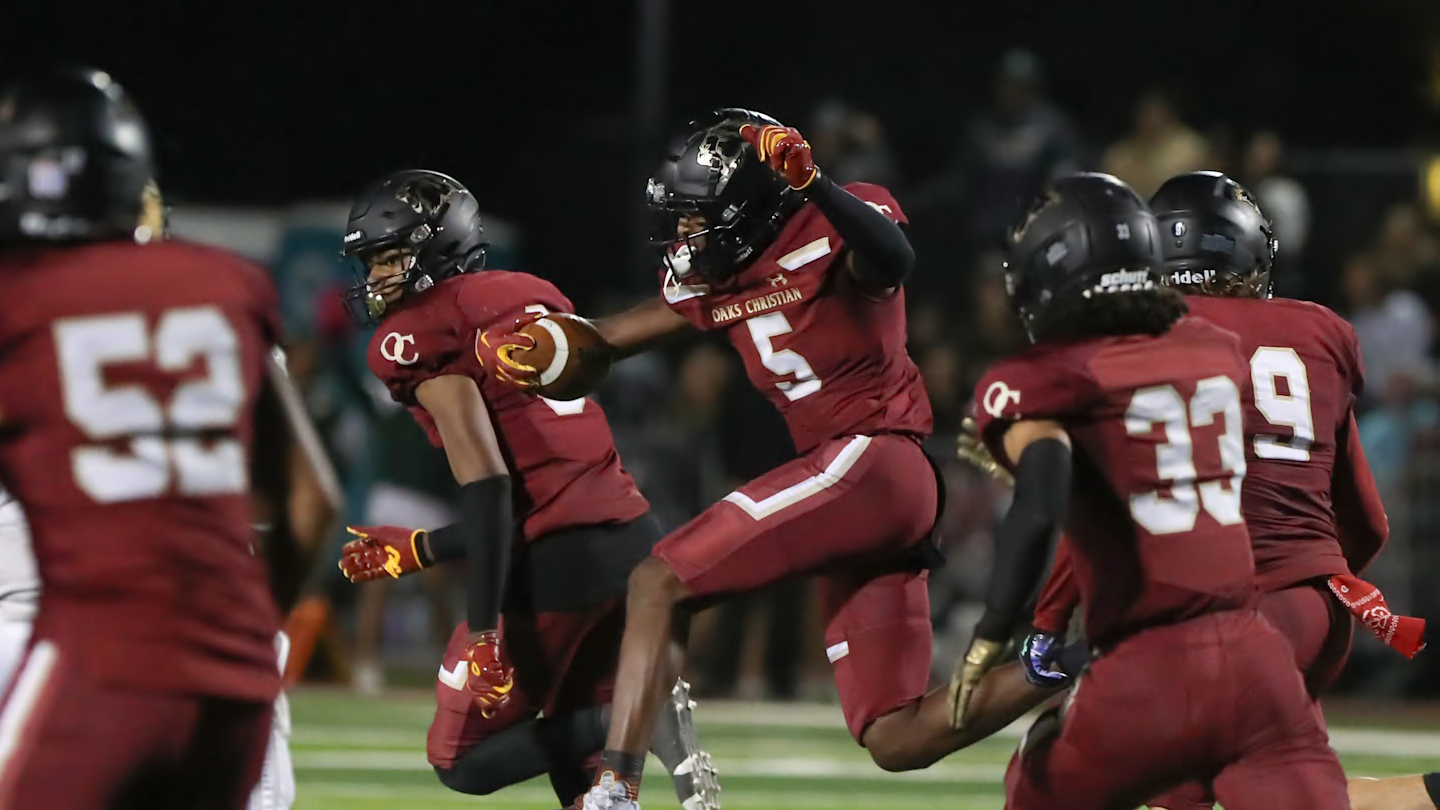
Four-star defensive back Davon Benjamin was a surprise addition to the official visitors hosted this weekend by the Michigan football program.
Benjamin, a 6-foot, 170-pound defensive back who could play cornerback or safety, was in Ann Arbor for his official visit, and despite being viewed by some recruiting experts as an Oregon lean, the No. 36 overall recruit in the 2026 class, according to the 247 Sports composite rankings, was impressed by the Wolverines.
“Michigan stood out with how serious they are about player development. They’re all about building you up on & off the field, & you can tell they’ve got a plan to help you succeed long term,” he said to Hayes Fawcett of On3.com.
Elite defensive back impressed by Michigan football visit
Michigan offered Benjamin over a year ago. Texas, Ohio State, Miami, and Oregon are all listed as “warm” on his 247 Sports recruiting profile, along with the Wolverines.
Going into the weekend, it felt like Michigan landing his commitment was going to be a long shot. But all it takes is one visit to change a recruitment. It’s possible that Michigan has done that, although it still feels like Oregon will be tough to beat.
Michigan could use another defensive back in the 2026 class, and there is no shortage of options, Benjamin included, especially since four-star cornerback Brody Jennings is looking around and sounds like he could be flipping his commitment to the Hurricanes.
Jennings also has some other official visits set with Alabama, Florida, and Georgia, all heavy hitters in college football recruiting, and in the NIL space.
Michigan’s NIL prowess will be tested in the coming weeks, but the fact that Benjamin visited and is showing a strong interest could be a sign that things have already started to turn the corner.
NIL
Social Media Reacts to Virginia Baseball Coach Brian O’Connor Leaving For Mississippi State
Things seemed to be trending towards Virginia Baseball head coach Brian O’Connor leaving to take the head coaching job at Mississippi State and it was made official tonight. O’Connor will be the Bulldog’s next head coach and now the Cavaliers will have to search for the successor to one of the top coaches in the […]
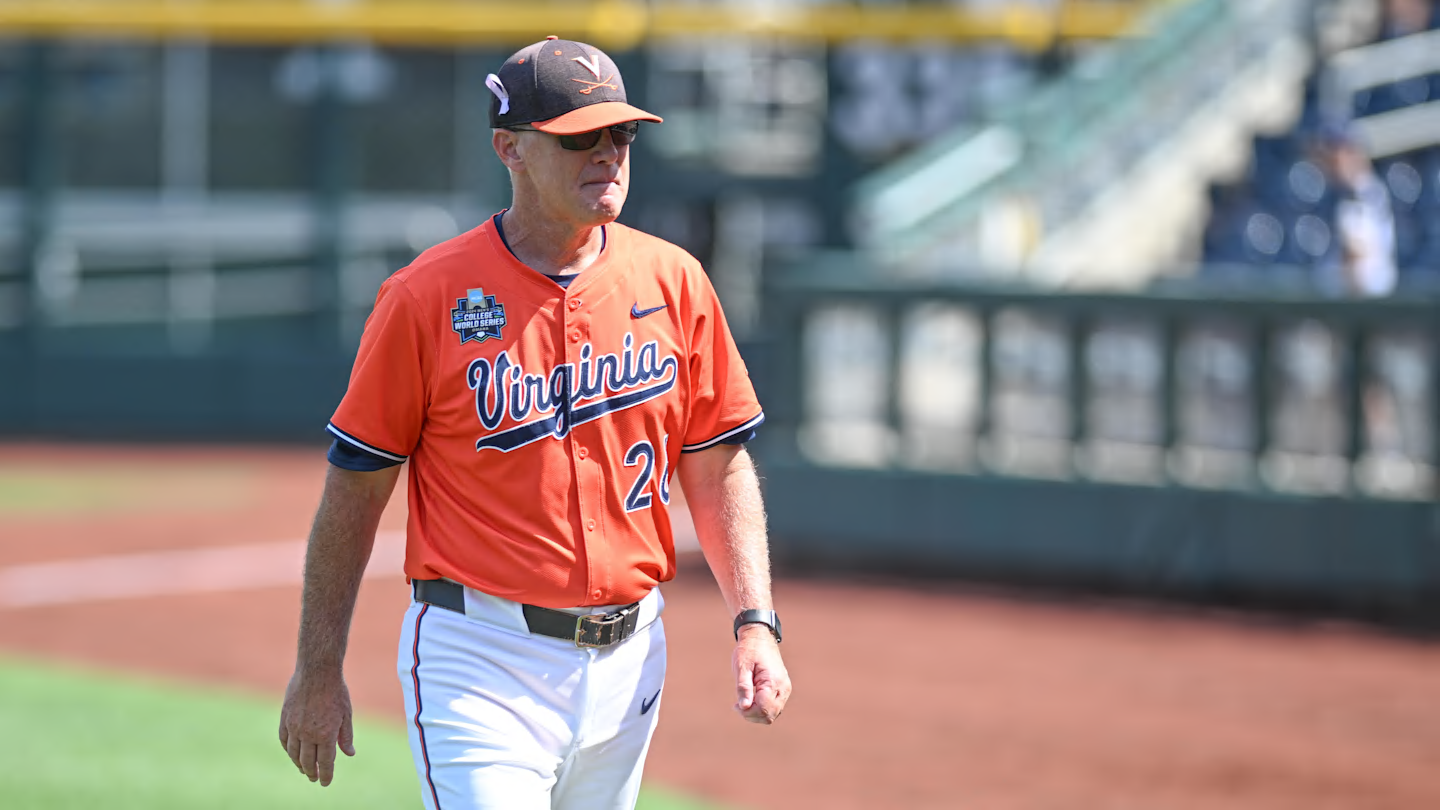
Things seemed to be trending towards Virginia Baseball head coach Brian O’Connor leaving to take the head coaching job at Mississippi State and it was made official tonight. O’Connor will be the Bulldog’s next head coach and now the Cavaliers will have to search for the successor to one of the top coaches in the country. O’Connor has been at UVA for the past 22 seasons but is leaving for a new challenge in Starkville.
This is a huge loss for UVA. O’Connor has been one of the best coaches in the country and replacing him is not going to be easy. This job should be attractive to a number of candidates, however.
With one of the biggest coaching moves in recent memory, social media had plenty of reaction to Brian O’Connor leaving for Starkville:
O’Connor had this to say about taking the job at Mississippi State:
“Mississippi State represents everything I love about college baseball — tradition, passion and a relentless pursuit of excellence. I’ve coached against this program and followed it closely for years. The atmosphere at Dudy Noble Field is nationally recognized as the best in the sport. I’m incredibly honored and grateful for the opportunity to lead a program with this kind of legacy and fan base. Mississippi State has set the standard in college baseball, and I can’t wait to get to work, build relationships and compete for championships in Starkville.”
O’Connor took over the Virginia program in 2004 and quickly elevated it into a national power. In 22 seasons, he led the Cavaliers to: O’Connor’s seven College World Series appearances are also the third most among active NCAA head coaches. Virginia had made just three NCAA appearances before his arrival. He also became the second-fastest coach in ACC history to reach 500 career wins.
O’Connor entered the 2025 season with a career record of 885-370-2 and a 362-234-1 record in ACC play. He is one of eight coaches in the history of the ACC to accumulate 700 wins and his .705 winning percentage is the highest among active NCAA coaches.
NIL
$7,000,000 for a Freshman? Insider Questions Massive Multi-Year Deal for USC-Bound TE Mark Bowman
College football recruiting reached new territory when Mark Bowman, the nation’s top tight end prospect, committed to USC amid reports of a staggering $7 million NIL deal over three years. The Mater Dei High School standout chose the Trojans over Texas and Georgia in a move that has sent shockwaves through the recruiting world. Industry […]

College football recruiting reached new territory when Mark Bowman, the nation’s top tight end prospect, committed to USC amid reports of a staggering $7 million NIL deal over three years. The Mater Dei High School standout chose the Trojans over Texas and Georgia in a move that has sent shockwaves through the recruiting world.
Industry insiders are raising serious questions about the sustainability and approval process for massive, multi-year contracts being offered to unproven college players. The deal is one of the largest NIL packages ever reported for a high school recruit, sparking debate about where college football’s financial arms race is heading.

NIL Uncertainty Grows, Questions Mount Around USC’s Bold Recruiting Contracts
Recruiting analyst Bobby Burton shared major concerns about the deal’s structure during a recent podcast appearance. “I don’t know how these deals are getting approved for multi-year when we don’t know exactly what the landscape for NIL is going to look like,” Burton said while discussing the unprecedented contract.
The confusion comes from current NIL regulations that don’t technically allow multi-year agreements. Burton pointed out the unclear future of oversight. “If there’s going to be essentially a third party that has to approve these large-dollar NIL deals, how are they going to follow through on these promises down the stretch?”
Bowman’s commitment came after USC made him their top priority in the 2026 recruiting cycle. The 6-foot-4 tight end from Santa Ana, Calif., had long been seen as a Texas-Georgia battle before USC became a serious contender with its aggressive NIL strategy.
The Trojans have overhauled their recruiting approach under new leadership, landing more than 25 commits before June. They hired Notre Dame’s recruiting coordinator this offseason, putting in place a system that clearly emphasizes financial incentives to land top-tier prospects.
Burton noted a broader trend of NIL inflation nationwide. He referenced Missouri offensive lineman Jackson Cantwell committing to Miami for approximately $3 million per year, illustrating just how rapidly the market is growing for elite recruits.
The timing appears strategic as schools push to lock in commitments before potential NIL rule changes. “You want to get the guys in the boat quickly,” Burton said, referencing the upcoming House settlement and revenue-sharing plans that could shift the entire system.
SEC Commissioner Greg Sankey recently stated that some non-SEC schools are offering high school players $20,000 per month to commit, with clawback clauses in place if they decommit. That highlights just how complicated these deals are becoming.
Bowman’s deal brings up big-picture questions about where college sports are headed. While his talent is evident — he had 32 catches for 435 yards and eight touchdowns in his senior season — the size of the investment is still a major gamble.
Now, the spotlight is on USC to see if they can hang on to these big-money recruits through signing day, especially after five-star linebacker Xavier Griffin recently decommitted. With rule changes looming, it’s unclear how long these types of deals can last.
College Sports Network has you covered with the latest news, analysis, insights, and trending stories in college football, men’s college basketball, women’s college basketball, and college baseball!
NIL
Florida Beats Out Three SEC Rivals For Elite OL Recruit
Florida Beats Out Three SEC Rivals For Elite OL Recruit originally appeared on Athlon Sports. Last season, the Florida Gators won eight games for the first time since 2020. Leading the offense for the second half of the season was quarterback DJ Lagway, a five-star true freshman quarterback and the future of the program. With his health […]
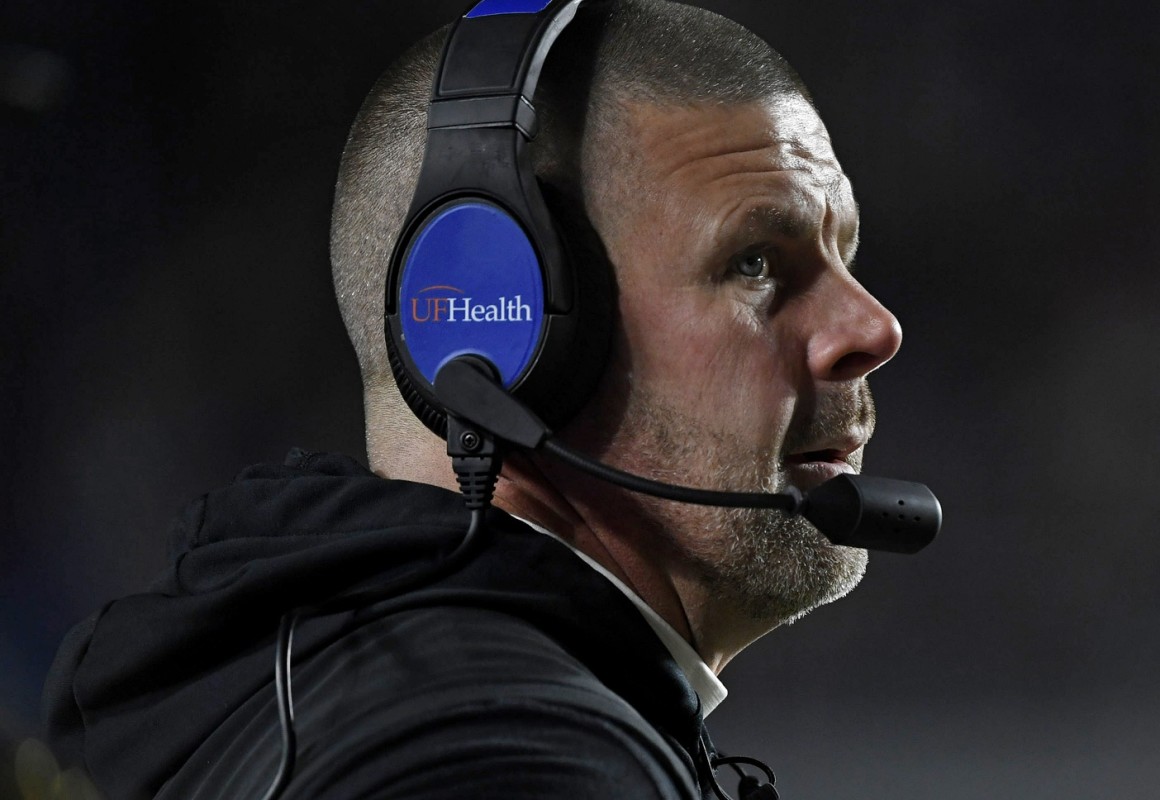
Florida Beats Out Three SEC Rivals For Elite OL Recruit originally appeared on Athlon Sports.
Last season, the Florida Gators won eight games for the first time since 2020. Leading the offense for the second half of the season was quarterback DJ Lagway, a five-star true freshman quarterback and the future of the program. With his health a priority for at least the next two seasons, Florida added a key building block to their future offensive line on Sunday.
Advertisement
Hayes Fawcett of On3 reported that G’Nivre Carr, a towering 6-foot-5, 320-pound interior lineman, has committed to Florida’s 2026 class. The three-star recruit chose the Gators over SEC rivals Tennessee and South Carolina. He also held offers from Alabama, Auburn, Kentucky, Oklahoma, Mississippi State, Ole Miss, and Texas A&M, among others.

© Kim Klement Neitzel-Imagn Images
“Once a Gator, always a Gator! Proud to be a Gator 5=1
Carr becomes the third hard commit in Florida’s 2026 class, joining defensive lineman Jamir Perez and quarterback Will Griffin. His commitment signals another long-term win for third-year head coach Billy Napier, who has gone 19-19 in Gainesville but is fresh off his best season at the helm with the Gators.
Advertisement
Carr’s path could align perfectly with the rise of former five-star quarterback DJ Lagway, who threw 12 touchdowns and nine interceptions as a true freshman last fall. By 2026, Lagway will be in his third season under center, with Carr potentially ready to shore up any holes on the offensive line.
Following the conclusion of this season, Florida will graduate multiple seniors on the offensive line, including veteran guard Damieon George Jr. Noel Portnjagin and Roderick Kearney sit as the only non-upperclassmen on the two-deep of Florida’s depth chart, per Ourlads.
Related: College Basketball World Reacts to Xaivian Lee’s $6 Million NIL Move
This story was originally reported by Athlon Sports on Jun 1, 2025, where it first appeared.
-

 College Sports2 weeks ago
College Sports2 weeks agoPortal Update – Basketball and Gymnastics Take Hits
-

 Rec Sports3 weeks ago
Rec Sports3 weeks agoThe Program, a New Basketball Training Facility, Opening in Greenpoint This September
-

 College Sports2 weeks ago
College Sports2 weeks agoPortal Update – Basketball and Gymnastics Take Hits
-

 Youtube3 weeks ago
Youtube3 weeks agoKYRIE Irving can’t miss!
-

 Professional Sports2 weeks ago
Professional Sports2 weeks agoJon Jones answers UFC retirement speculation as fans accuse champion of 'holding the belt …
-
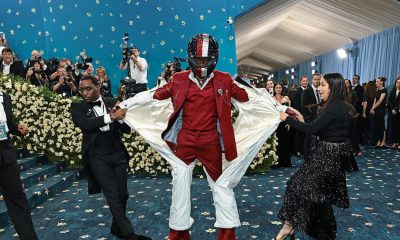
 Technology3 weeks ago
Technology3 weeks agoReal-life companies pump up promotions around fictional team in new ‘F1′ movie
-

 Youtube3 weeks ago
Youtube3 weeks agoStephen A.’s message to Draymond Green
-

 NIL6 days ago
NIL6 days ago2025 NCAA Softball Tournament Bracket: Women’s College World Series bracket, schedule set
-

 Youtube3 weeks ago
Youtube3 weeks ago20 years ago, LeBron James made his debut on ESPN. Now, Bronny follows in his footsteps on ESPN2
-

 Health2 weeks ago
Health2 weeks agoBYU women's basketball guard injures ACL twice









 + 2025 NBA Finals Preview
+ 2025 NBA Finals Preview  | SportsCenter
| SportsCenter

























